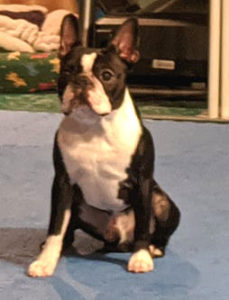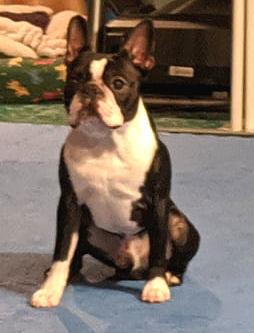A “Stay!” Is your dog’s stop sign. Whatever position they’re in. Wherever they are. The release word you choose is the dog’s signal to move. Every stop needs a go.
Let’s say you’re driving around the city in fairly heavy traffic. You come to an intersection and the light turns red as you approach. Theoretically, you passed your driver’s license test, so you know you have to stop. And you also know you’re not going anywhere until the light turns green. Until you get your release signal.
Picture what would happen if nobody knew those signals. If every car just went on its merry way whenever the driver felt like it. The traffic wouldn’t be heavy. It would be chaotic.
Dog traffic signals
Teaching your dog the “Stay!” won’t work until you pair it with a release word. If dogs are allowed to self-release from a stay, then “Stay!” means nothing.

You know you want your dog to stay while you’re accepting a delivery and the door’s open. You want them to stay put until the door is safely shut again. But your dog doesn’t know that. They don’t understand “Stay until I close the door.” Dogs can understand “Stay until you hear your release word.” Your “Place” game will help with this, too.
Motion triggers
Most dogs will move when you move. They try to keep you in sight. When our students are teaching their dogs “Stay!” most pair a step and/or arm motion when giving their release word. Dogs are really good at absorbing the whole picture. If you stand stock still while your dog is holding a “Stay!” and move when you release them, that’s what they learn. They stay when you stay, they move when you move.
That’s why you have to disconnect your motion from both the “Stay!” and “Free!” commands. You have to be able to move when your dog is staying. And you must not move when releasing your dog from a “Stay!”
Make it easy for your dog
The best way to confuse your dog is being okay with them getting it wrong. If they move before you release them, they don’t understand either stop or go. Trying to fix something just confuses them even more. If they break the “Stay!” just move to a new position and start again.
Dogs trained with positive reinforcement know there are no horrible consequences for getting stuff wrong. They’re not afraid to try again. And most dogs really want to get it right, so they work with you. Because they also know there’s a celebration jackpot when they get it right. Every stop needs a go. Make it easy for your dog to get that jackpot.

